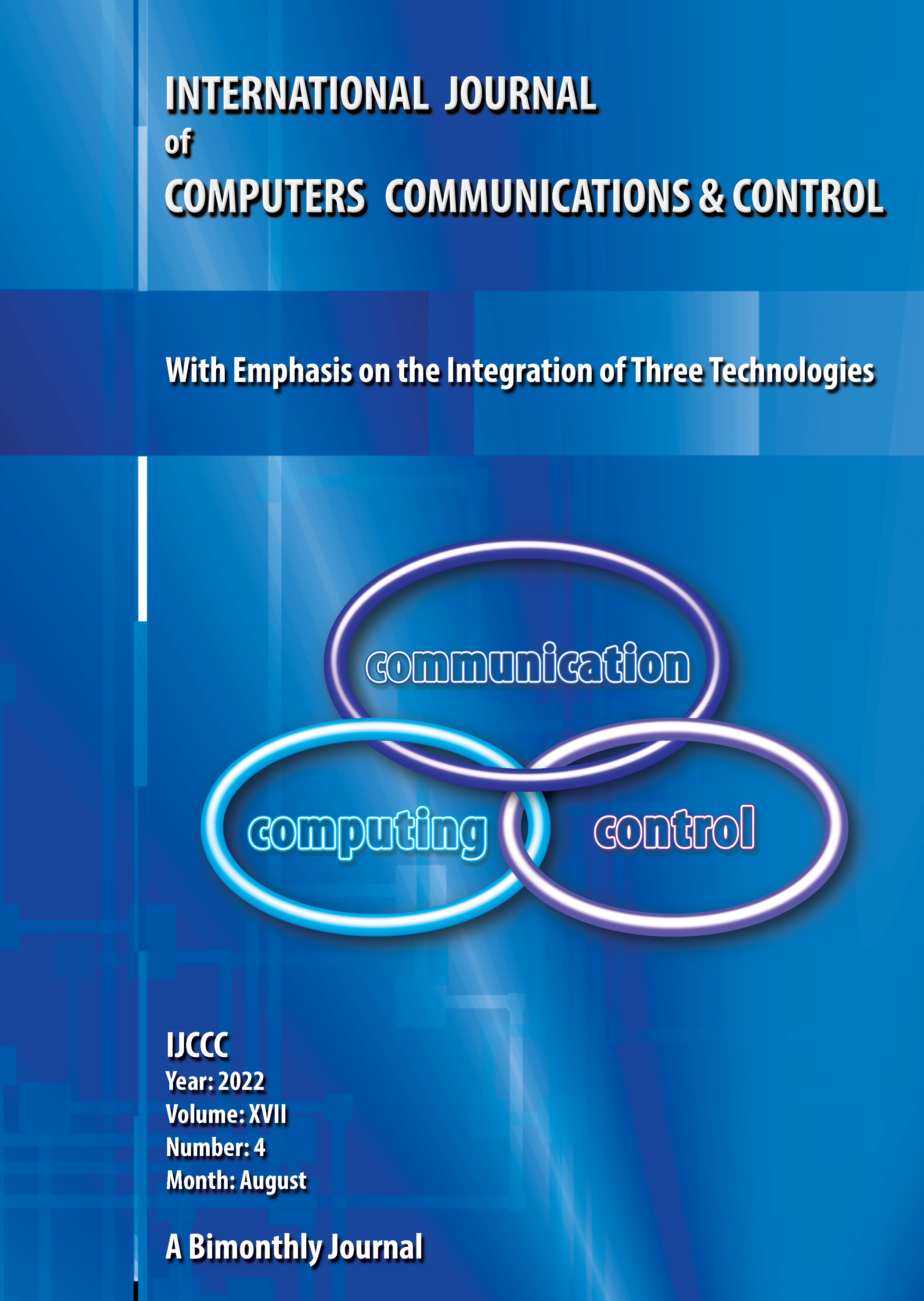An Enhanced Neural Graph based Collaborative Filtering with Item Knowledge Graph
DOI:
https://doi.org/10.15837/ijccc.2022.4.4568Keywords:
filtering techniques, neural network, graph convolution neural networkAbstract
Recommendation system is a process of filtering information to retain buyers on e-commerce sites or applications. It is used on all e-commerce sites, social media platform and multimedia platform. This recommendation is based on their own experience or experience between users. In recent days, the graph-based filtering techniques are used for the recommendation to improve the suggestions and for easy analysing. Neural graph based collaborative filtering is also one of the techniques used for recommendation system. It is implemented on the benchmark datasets like Yelp, Gowalla and Amazon books. This technique can suggest better recommendations as compared to the existing graph based or convolutional based networks. However, it requires higher processing time for convolutional neural network for performing limited suggestions. Hence, in this paper, an improved neural graph collaborative filtering is proposed. Here, the content-based filtering is performed before the collaborative filtering process. Then, the embedding layer will process on both the recommendations to provide a higher order relation between the users and items. As the suggestion is based on hybrid recommendation, the processing time of Convolutional neural network is reduced by reducing the number of epochs. Due to this, the final recommendation is not affected by the smaller number of epochs and also able to reduce its computational time. The whole process is realized in Python 3.6 under windows 10 environment on benchmark datasets Go Walla and Amazon books. Based on the comparison of recall and NDCG metric, the proposed neural graph-based filtering outperforms the collaborative filtering based on graph convolution neural network.
References
Dhingra, S., & Kumar, D. (2019). A review of remotely sensed satellite image classification. International Journal of Electrical & Computer Engineering (2088-8708), 9(3).
https://doi.org/10.11591/ijece.v9i3.pp1720-1731
Kumar, R., & Sharma, P. K. (2019). Classification Techniques for Object Detection in Remote Sensing Images. Available at SSRN 3356495.
https://doi.org/10.2139/ssrn.3356495
Das, P., & Pandey, V. (2019). Use of Logistic Regression in Land-Cover Classification with Moderate-Resolution Multispectral Data. Journal of the Indian Society of Remote Sensing, 47(8), 1443-1454.
https://doi.org/10.1007/s12524-019-00986-8
Barde, I., Suryawanshi, N., Samarth, S., Bhure, T., Rehpade, N. N., & Balamwar, S. Object Based Classification Using Image Processing Techniques.
Borra, S., Thanki, R., & Dey, N. (2019). Satellite Image Classification. In Satellite Image Analysis: Clustering and Classification (pp. 53-81). Springer, Singapore.
https://doi.org/10.1007/978-981-13-6424-2_4
Tuba, E., Jovanovic, R., & Tuba, M. (2020). Multispectral Satellite Image Classification Based on Bare Bone Fireworks Algorithm. In Information and Communication Technology for Sustainable Development (pp. 305-313). Springer, Singapore.
https://doi.org/10.1007/978-981-13-7166-0_30
Mohammed, M. A., Naji, T. A., & Abduljabbar, H. M. (2019). The effect of the activation functions on the classification accuracy of satellite image by artificial neural network. Energy Procedia, 157, 164-170.
https://doi.org/10.1016/j.egypro.2018.11.177
Yu, L., Lan, J., Zeng, Y., & Zou, J. (2019). Comparison of Land Cover Types Classification Methods Using Tiangong-2 Multispectral Image. In Proceedings of the Tiangong-2 Remote Sensing Application Conference (pp. 241-253). Springer, Singapore.
https://doi.org/10.1007/978-981-13-3501-3_23
Ishii, T.; Nakamura, R.; Nakada, H.; Mochizuki, Y.; Ishikawa, H. (2015). Surface object recognition with CNN andSVM in Landsat 8 images. In Proceedings of the IEEE 14th IAPR International Conference on MachineVision Applications (MVA), Tokyo, Japan, 18-22 May 2015; pp. 341-344.
https://doi.org/10.1109/MVA.2015.7153200
Espinola, M., Piedra-Fernandez, J. A., Ayala, R., Iribarne, L., & Wang, J. Z, (2014). "Contextual and Hierarchical Classification of Satellite Images Based on Cellular Automata", IEEE Transactions on Geoscience and Remote Sensing, 53(2), 795-809.doi:10.1109/tgrs.
https://doi.org/10.1109/TGRS.2014.2328634
M. Espnola et al., (2010). Cellular automata applied in remote sensing to implement contextual pseudo-fuzzy classification, in Proc. 9th Int. Conf. ACRI, vol. 6350.
https://doi.org/10.1007/978-3-642-15979-4_33
SarikaYadav, Imdad Rizvi, ShailajaKadam, Luis Iribarne, and James Z. Wang, (2015). Urban Tree Canopy Detection Using Object-Based Image Analysis for Very High Resolution Satellite Images IEEE Trans on geosciences and remote sensing.
https://doi.org/10.1109/ICTSD.2015.7095889
F. S. Al-Ahmadi and A. S. Hames, (2009). , "Comparison of Four Classification Methods to Extract Land Use and Land Cover from Raw Satellite Images for Some Remote Arid Areas, Kingdom of Saudi Arabia", JKAU; Earth Sci., Vol. 20 No.1, pp: 167-191 (A.D./1430 A.H.)
https://doi.org/10.4197/Ear.20-1.9
D. Menaka, L. Padmasuresh and S. SelvinPrem Kumar, 2015. "Classification of Multispectral Satellite Images using Sparse SVM Classifier", Indian Journal of Science and Technology, Vol. 8, No. 24.
https://doi.org/10.17485/ijst/2015/v8i24/85355
DM.Längkvist, A. Kiselev, M. Alirezaie and A.Loutfi 2016. Classification and segmentation of satellite orthoimagery using convolutional neural networks. Remote Sensing, 8(4), 329.
Additional Files
Published
Issue
Section
License
Copyright (c) 2022 Sangeetha M

This work is licensed under a Creative Commons Attribution-NonCommercial 4.0 International License.
ONLINE OPEN ACCES: Acces to full text of each article and each issue are allowed for free in respect of Attribution-NonCommercial 4.0 International (CC BY-NC 4.0.
You are free to:
-Share: copy and redistribute the material in any medium or format;
-Adapt: remix, transform, and build upon the material.
The licensor cannot revoke these freedoms as long as you follow the license terms.
DISCLAIMER: The author(s) of each article appearing in International Journal of Computers Communications & Control is/are solely responsible for the content thereof; the publication of an article shall not constitute or be deemed to constitute any representation by the Editors or Agora University Press that the data presented therein are original, correct or sufficient to support the conclusions reached or that the experiment design or methodology is adequate.








